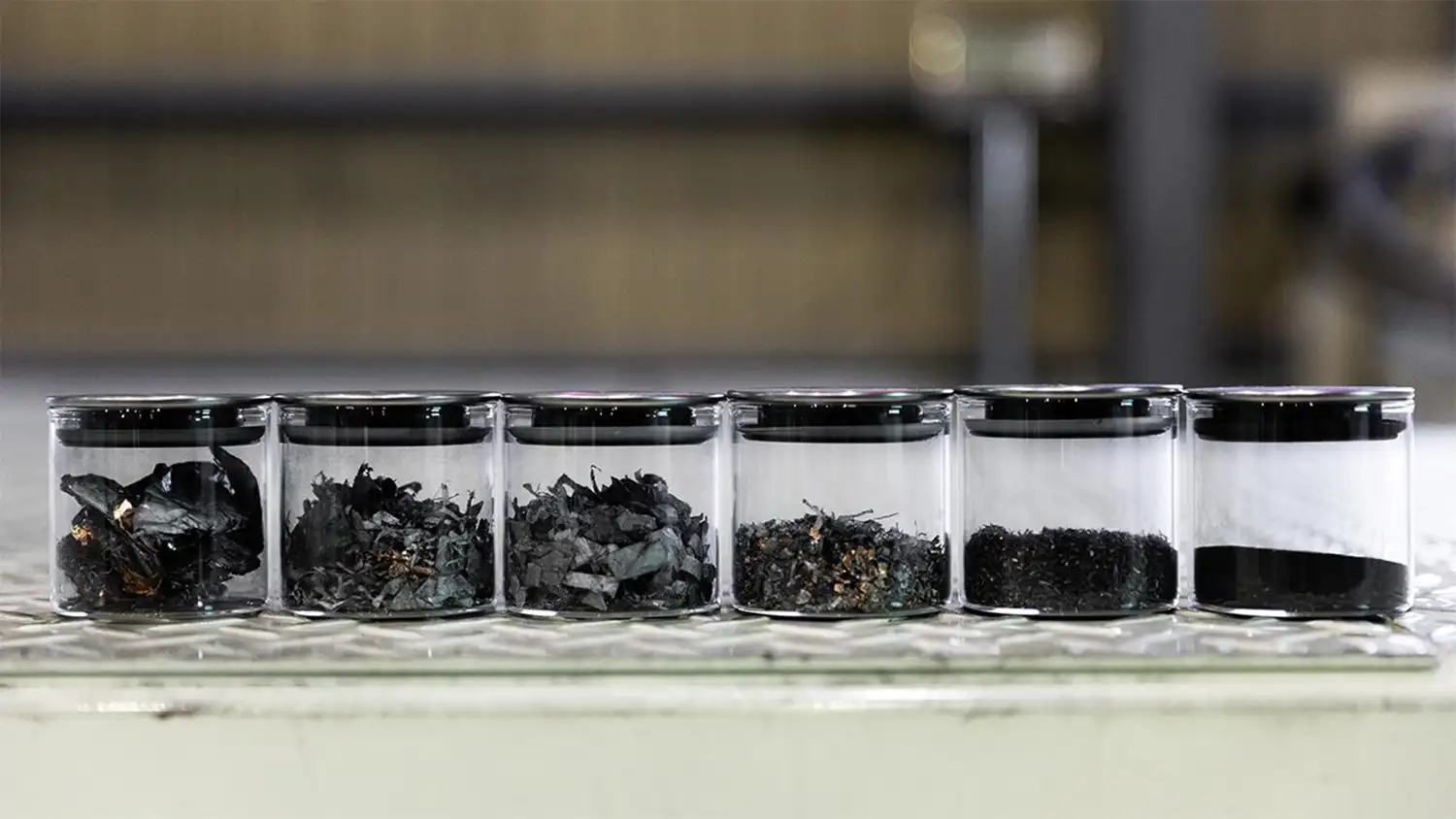
Source: toyotatimes.jp
The black substances packed into glass bottles in the picture above were born from the car parts in the picture below through a process known as “special recycling.”
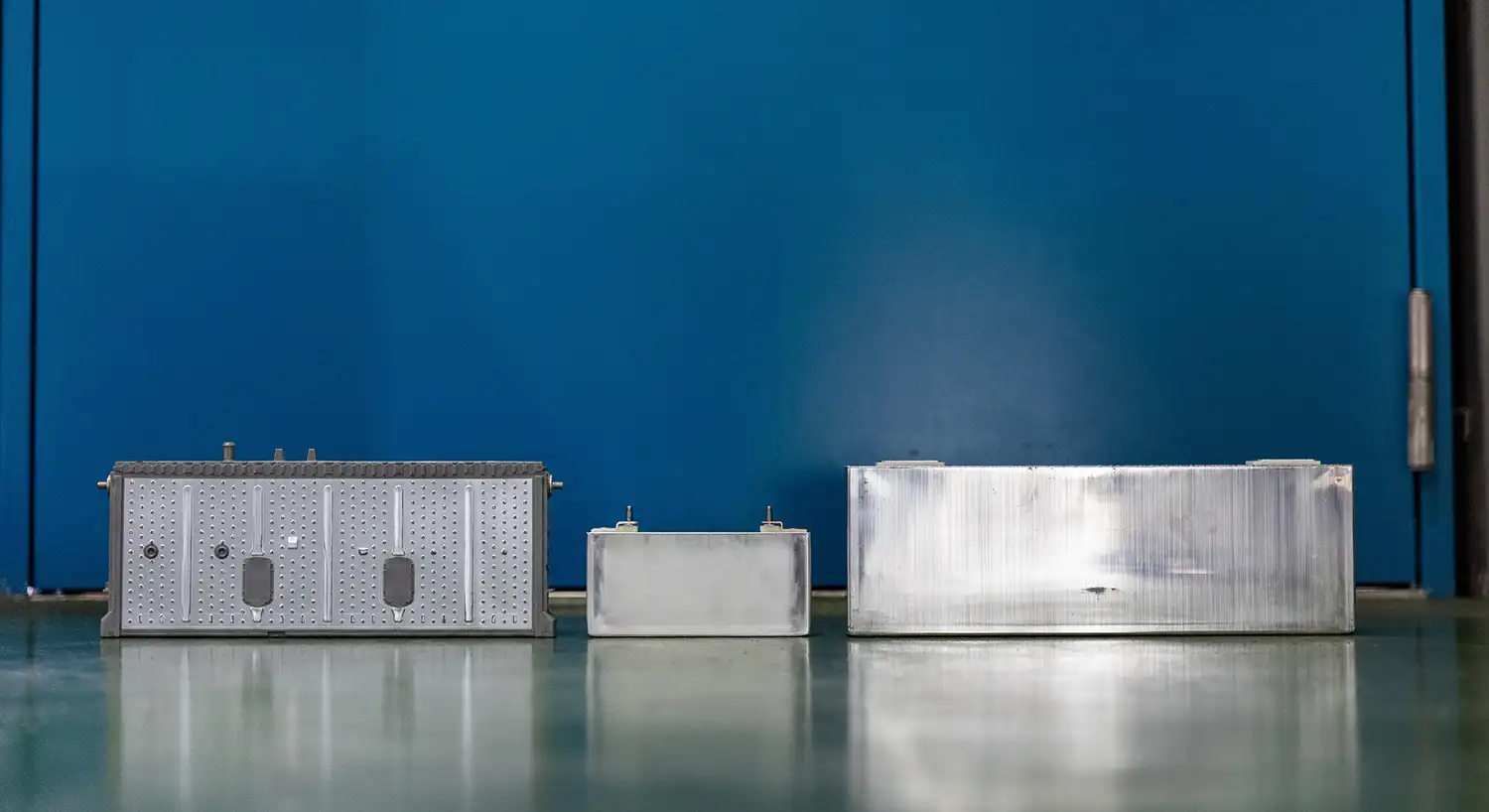
These are batteries from modern hybrid and electric cars. At left is a nickel metal hydride battery (NiMH) used up until the 3rd generation Prius; the middle is a lithium-ion battery used in other hybrid cars, and at right is a lithium-ion battery from a bZ4X.
Although most people never get a chance to see such batteries, disposing of them when cars reach end-of-life is growing into a serious issue.
Other issues are accompanying the increasing adoption of electrified vehicles in recent years, such as securing rare metals needed for their batteries, like cobalt or lithium. Reserves of these mineral resources are limited, and unplanned mining can result in resource depletion.
To prevent that, countries worldwide are promoting recycling to recover those materials. In Europe, regulations requiring battery manufacturers to use a fixed ratio of rare metals recovered from spent batteries will take effect in 2031.
Heading Toward Carbon Zero, from Manufacture to Recycling
Battery electrodes contain a lot of valuable resources like cobalt, lithium, and nickel.
However, current recycling methods begin by throwing spent batteries into an incinerator and then collecting the rare metals left over after the burn.
That method, though, reduces the amount of materials recovered and releases an enormous amount of CO2, which has an extensive environmental impact.
Moving toward carbon neutrality is going to require making visible all the emissions of the whole lifecycle from manufacturing to decommissioning and recycling and reducing them.
As a major step toward that, Toyota has been performing verification testing on battery recycling without burning. This project is not well known even inside the company. We went on the scene in this essential but unknown base.
Achieving incineration-free recycling
Chief Sustainability Officer Yumi Otsuka says we need a recycling-oriented society where incineration is not required.
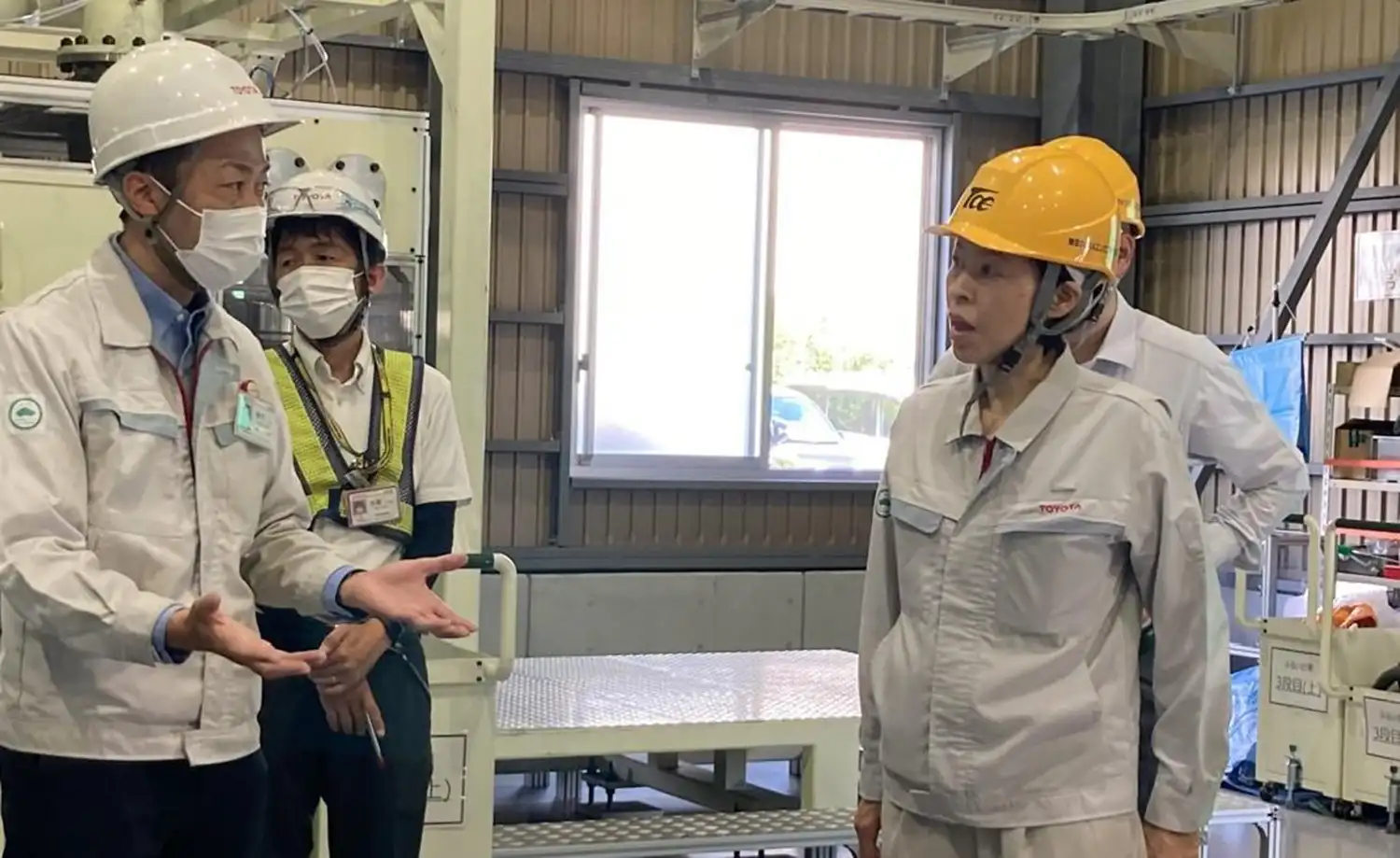
The necessity for a circular economy to solve climate change and biodiversity is well recognized.
To make that a reality, we have started a system allowing traceability from production to disposal. However, we can’t create a circular economy by creating that system alone.
We also need technology and know-how to achieve circularity. There, Toyota has a powerful partner in Toyota Chemical Engineering.
So, what kind of company is this powerful partner, Toyota Chemical Engineering? To find out, we headed to Handa in Aichi Prefecture.
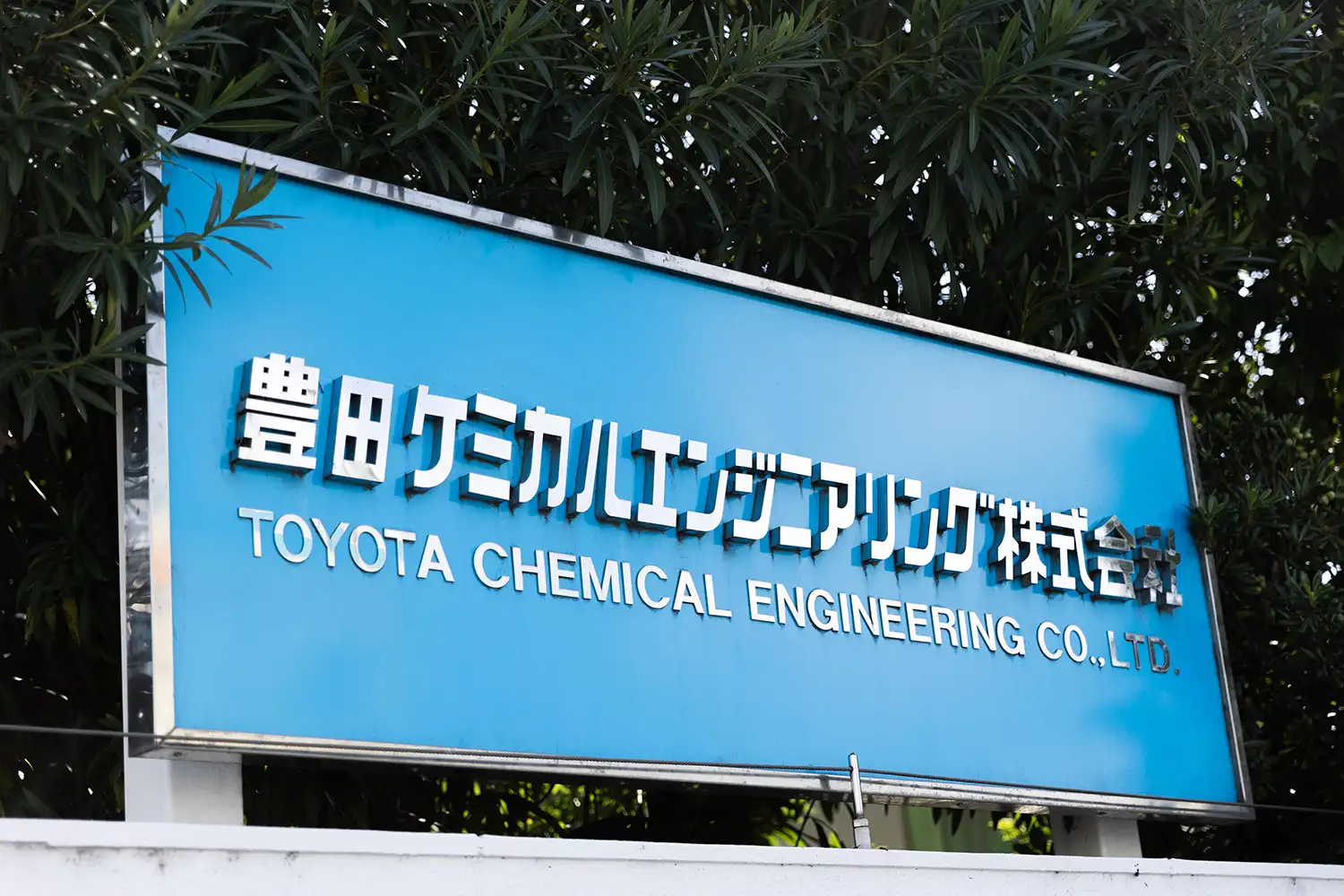
The industrial waste processing company worked with Toyota in 2010 to establish the world’s first NiMH battery recycling technology. Ever since, it has been collecting and recycling spent batteries from Toyota Hybrid Electric Vehicles (HEVs) in Japan.
Up to now, Toyota has recycled batteries using conventional incineration techniques.
In the fall of 2023, though, Toyota and Toyota Chemical Engineering took on the challenge of battery recycling without burning to find a recycling technology with lower emissions.
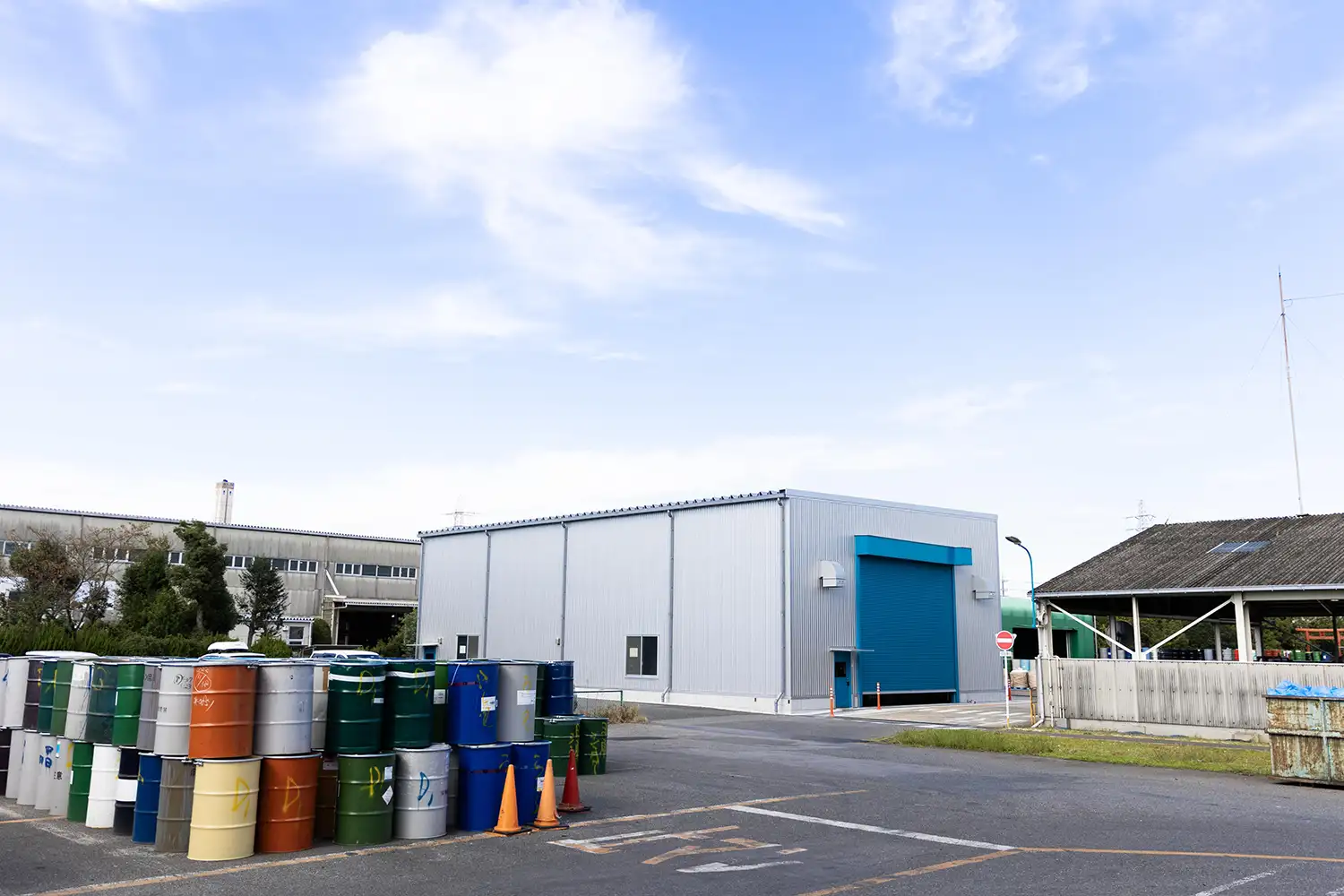
This test plant is making the first step on the road to transforming spent batteries into new ones. They claim that inside is a method to safely recover materials from spent car batteries without incineration.
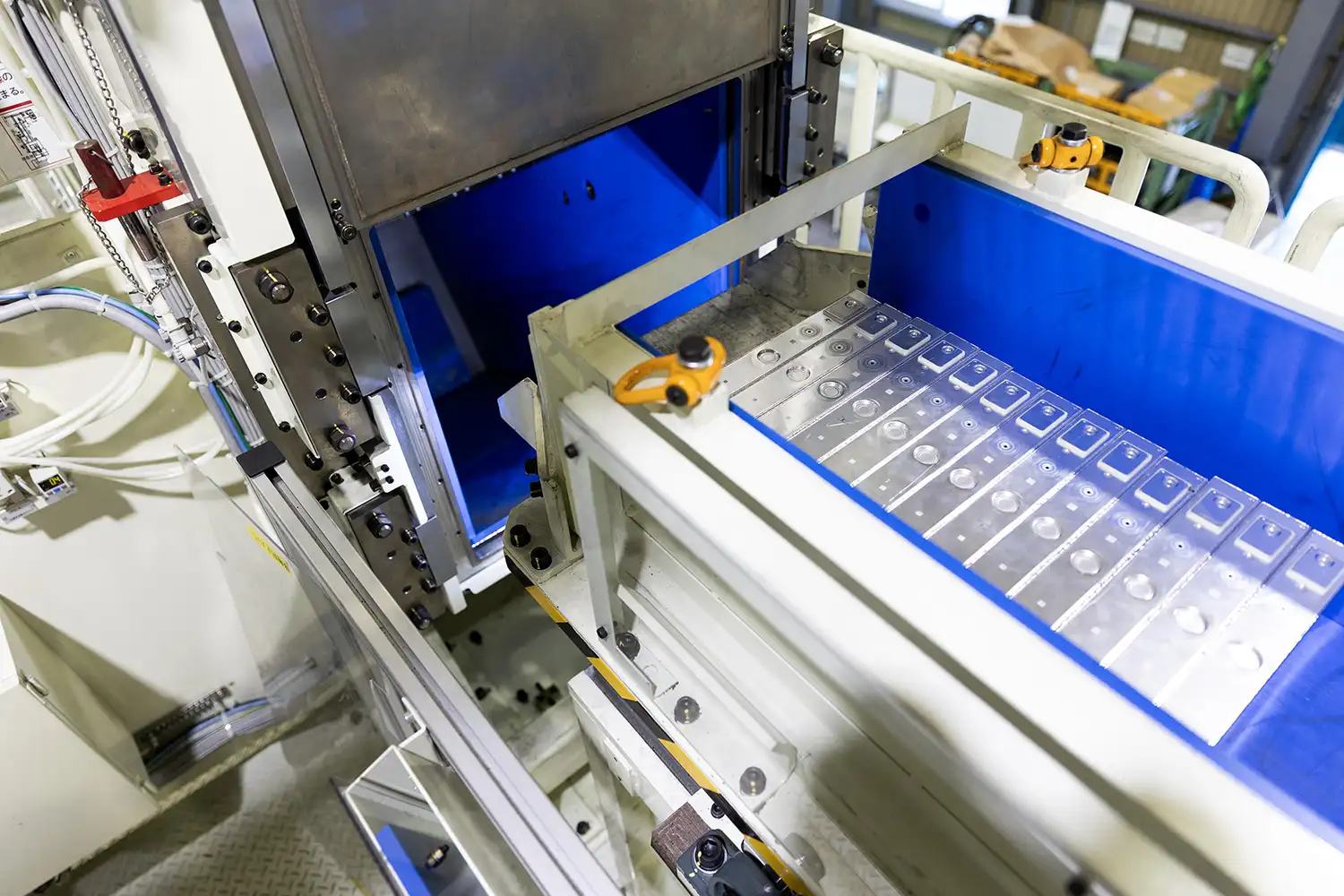
The process begins as spent batteries are transferred into the equipment.
The batteries are filled with an electrolytic solution to allow for easier movement of positive and negative ions for the charging and discharging of electricity. This fluid, though, is highly flammable, and mishandling carries a risk of fire.
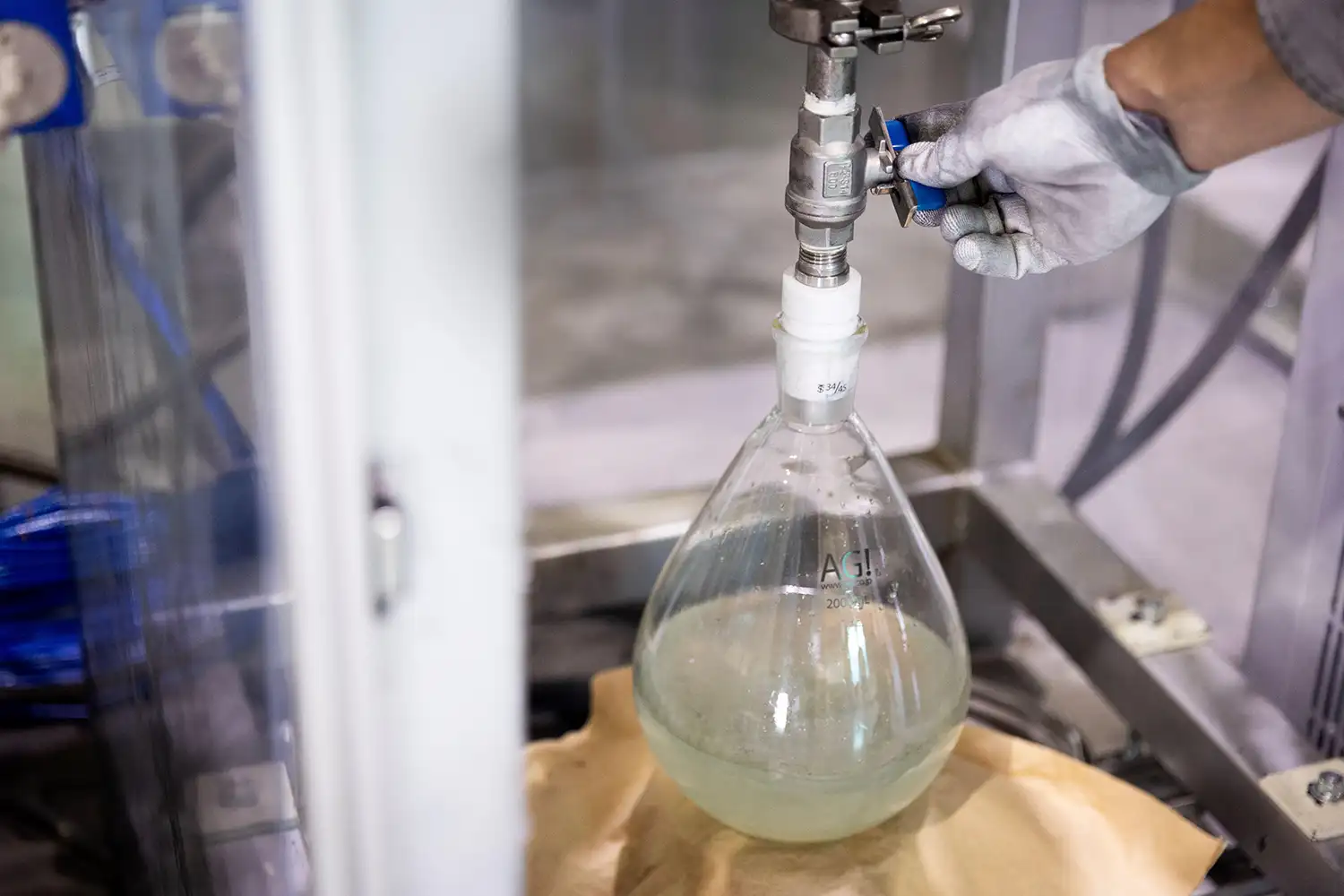
To eliminate that risk, the facility can distill and extract the electrolytic fluid. That technique is not used in conventional recycling, meaning that the batteries had to be incinerated with the fluid in place.
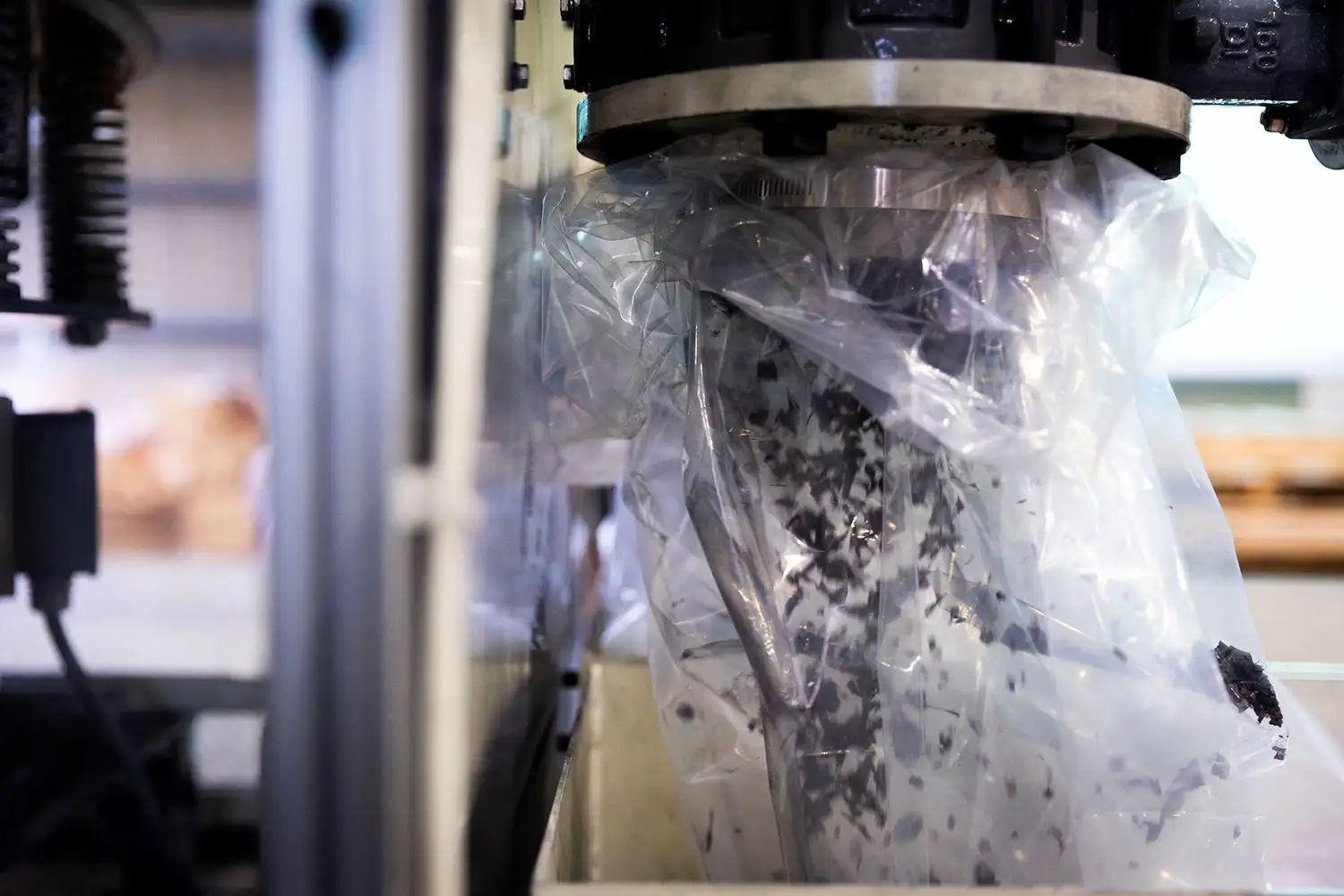
After the fluid is extracted, the cells are shredded. The facility then sorts and recovers the resources, like large pieces containing aluminum and iron or a powder called “black mass” containing copious rare metals.
The sorted pieces and powders are transported to cooperating companies and processed into materials for new batteries.
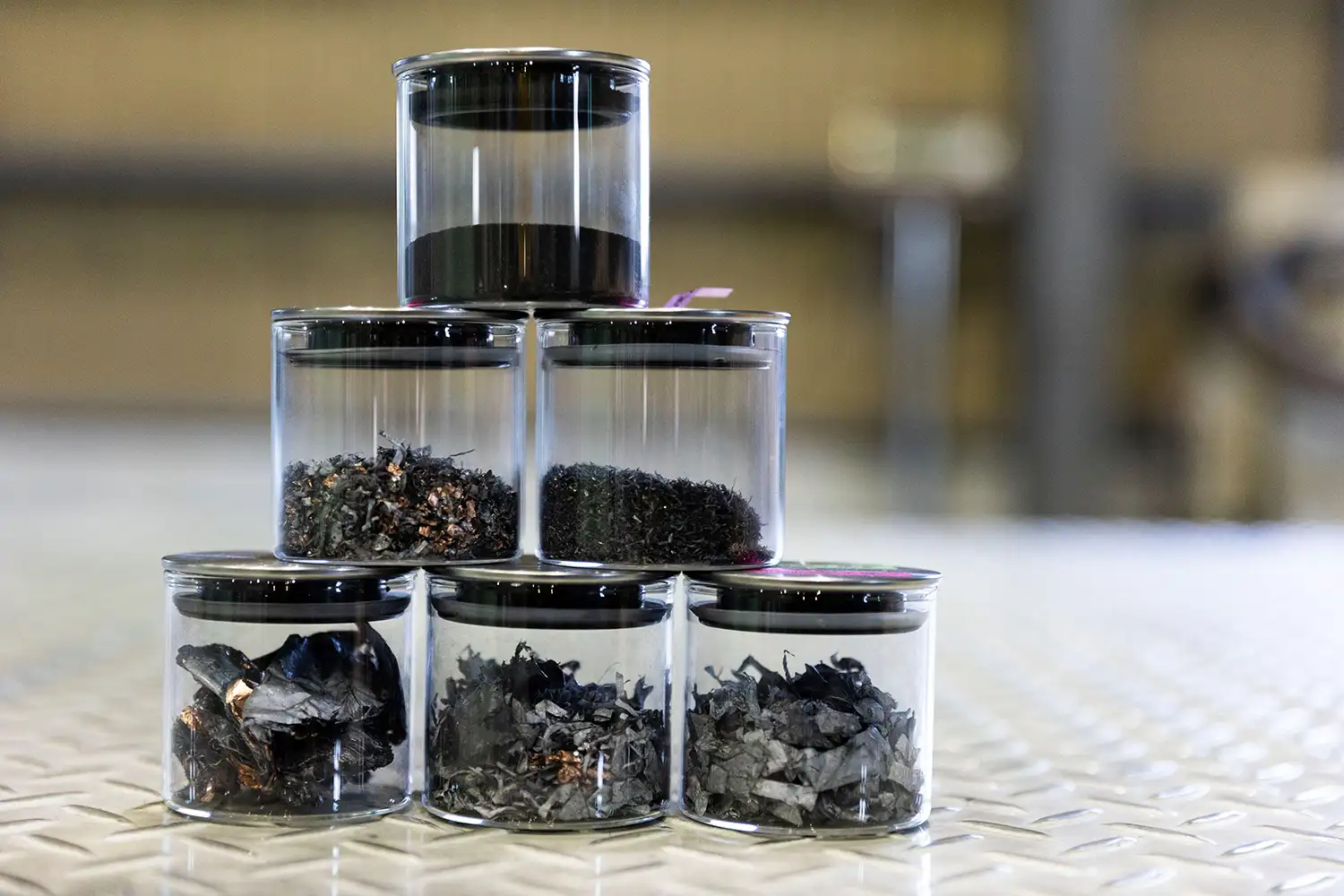
This is battery recycling without burning, which not only reduces CO2 emissions but improves recovery rates. Toyota employees had this to say about the technology:
Keisuke Isomura, Assistant Manager, Environment Affairs and Engineering Management Division
In conventional battery disposal in Japan, the battery is first burned, releasing CO2. We’re working on developing and verifying low-emission disposal methods for Toyota’s goals of establishing a circular economy and achieving carbon neutrality.
Kenichiro Muramatsu, Raw Material Development Division
We have combined the technology we developed to detoxify batteries without burning with existing recycling technology. Not only will it contribute to carbon neutrality, but it also allows for sorting and recovering materials we can’t get from conventional incineration, dramatically increasing recovery rates. It is a step toward achieving a circular economy.
CSO Otsuka, who toured the test plant, stressed that being environmentally conscious does not mean imposing limits.
Otsuka
Taking on new challenges carries a cost. But it’s important not to get hung up on that cost.
For example, take our car subscription service, KINTO. Since we are managing the cars ourselves, that makes it easier to guarantee recovery and recycle the parts and materials. It also offers an ongoing contact point with customers, giving us more chances to deliver them new value like upgrades and personalization.
The demand for circularity to reduce environmental impact will also offer new business opportunities.
Toyota has worked in tandem with Toyota Chemical Engineering on this revolutionary battery recycling attempt. The latter is seeking to become a leader in the environmental industry and is also working on developing various other technologies.
Discussing these offers one surprising idea after another, like making electricity from water and garbage, or industrial waste disposal using incineration without releasing CO2 into the atmosphere.
The company’s dream of creating a circular economy is at the heart of all these technologies, including battery recycling.
Garbage is becoming a resource without emitting carbon… Could this be in our future?
Creating electricity from water and garbage
Toyota Chemical Engineering was established in 1973, a time when pollution from Japan’s rapid economic growth was becoming a problem.
The company’s roots are in the desire to safely process industrial waste and protect Japan’s environment and local people from pollution. From that desire, the company established a system that not only detoxifies industrial waste but also recycles and recovers factory wastewater for reuse on the premises.
Now, it is developing various techniques for the move toward decarbonization, as well as a method to use the power of water to create electricity from garbage without burning.
We were shown a piece of equipment with a large lid called a “hydrothermal processor.”
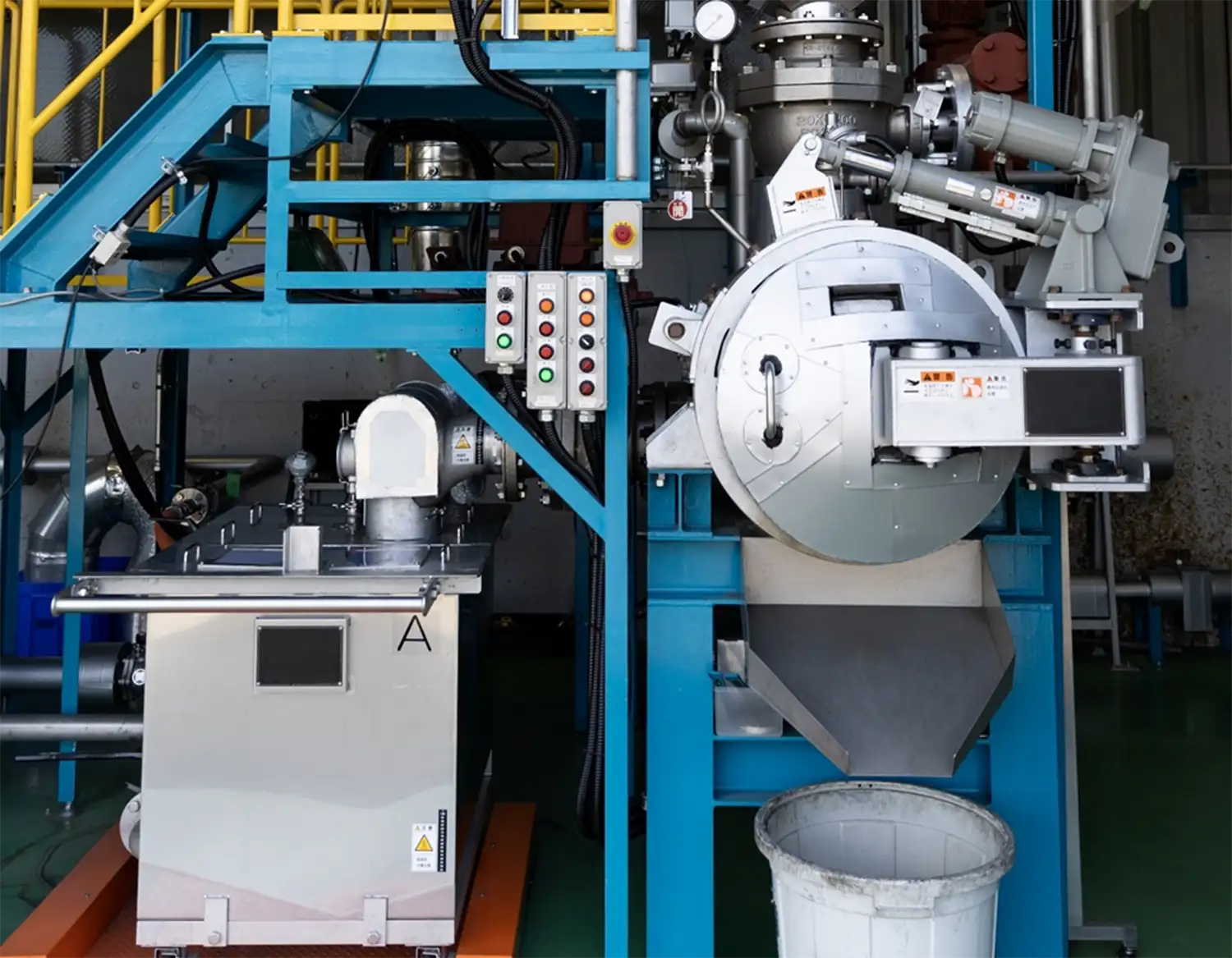
What is inside?
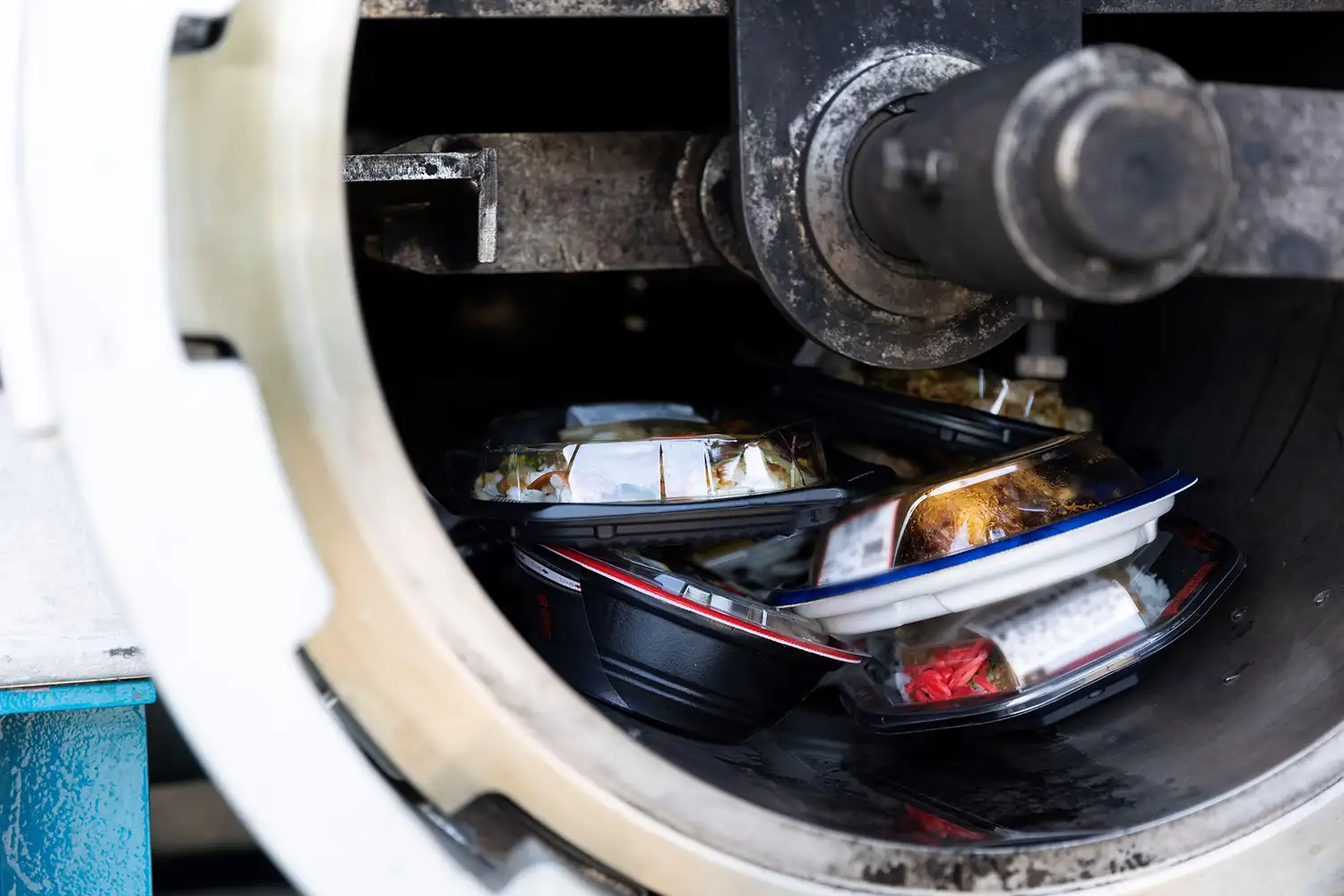
A few expired lunch boxes. How can these be used to create electricity? We asked for a demonstration.

From the hopper on top, they put in not only lunch boxes but sawdust, shredded paper, and other garbage. It processes the garbage into a liquid using high-temperature, high-pressure water. To put it simply, it’s a massive pressure cooker.
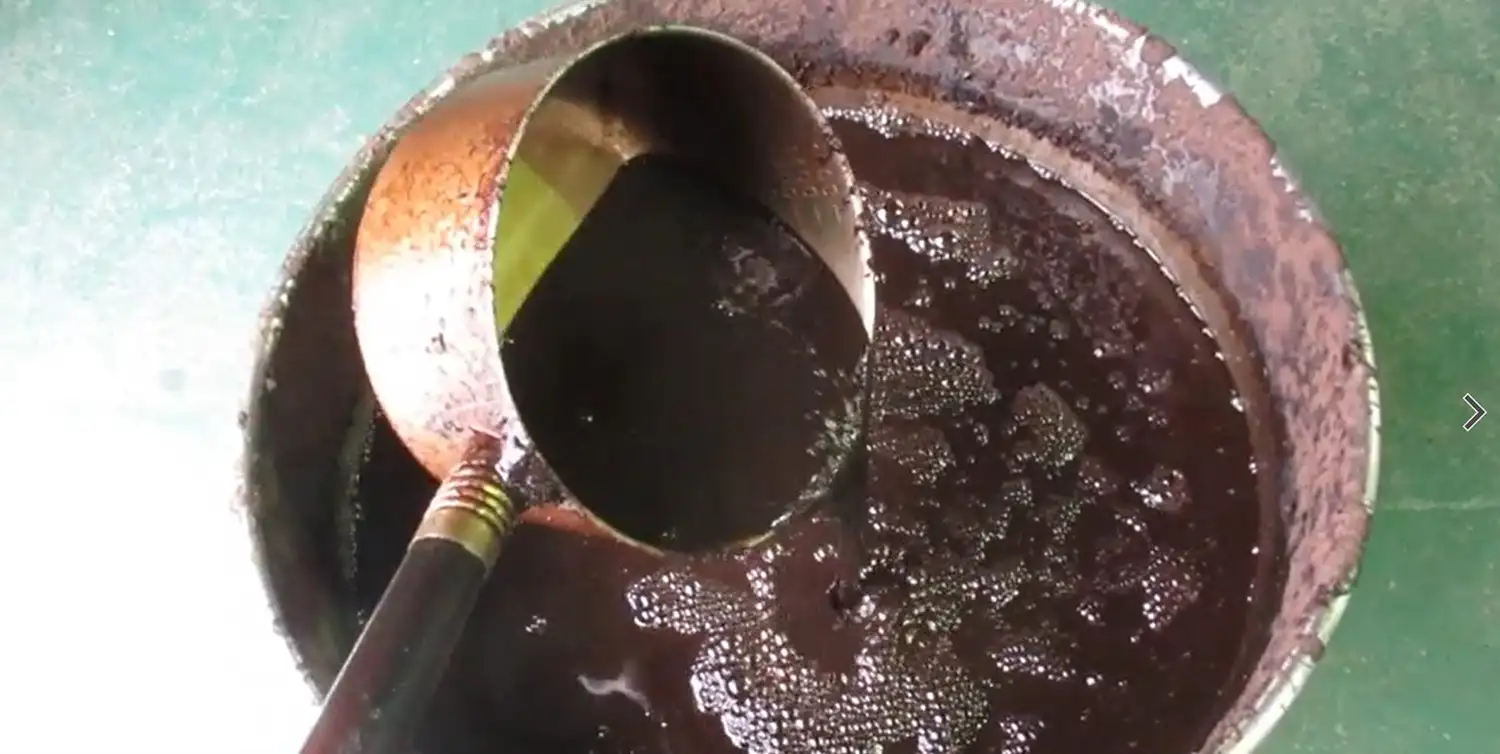
Then, they pump that into a methane fermentation vessel. There, they use the power of microorganisms to ferment it into a gas primarily comprising methane. They use that as a fuel to generate electricity for the plant.
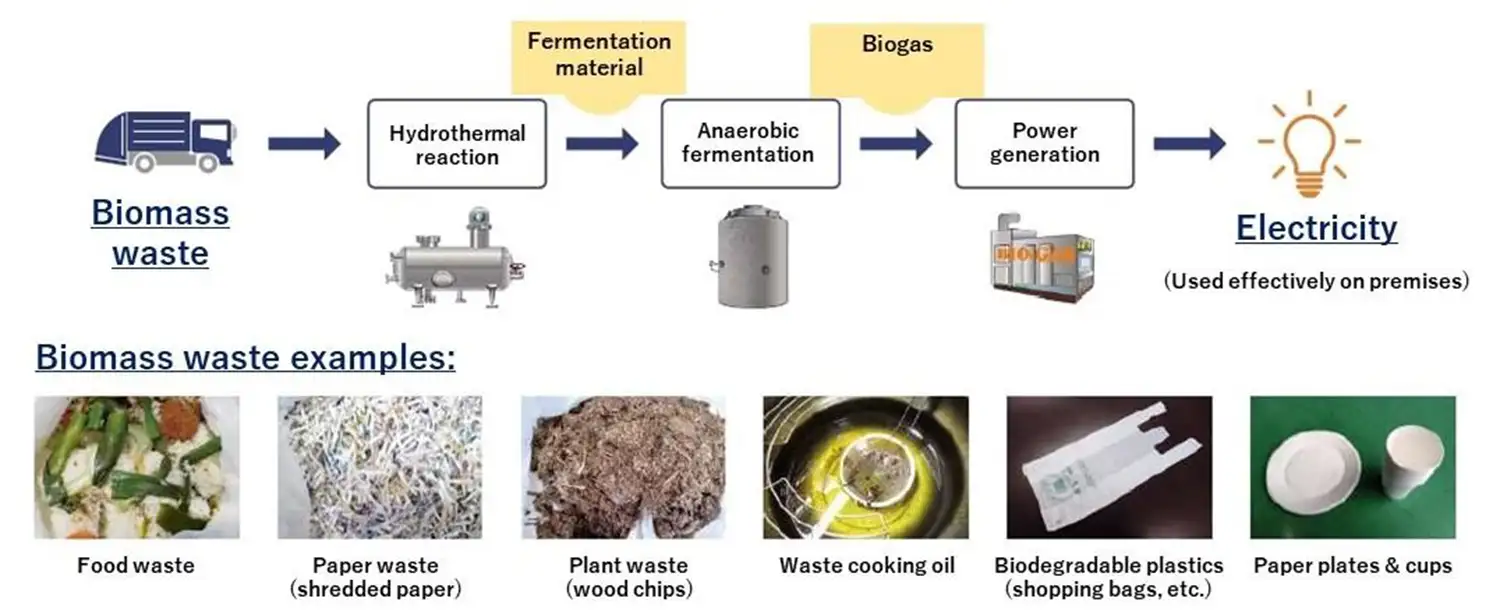
Creating electricity out of household waste without incinerating it is just one of the many technological developments that are going to play a major role in achieving a circular economy.
Incineration Without CO2 Emissions
Toyota Chemical Engineering’s main business is the proper disposal of industrial waste. In FY2022, the company disposed of 127,432 metric tons of waste, from cinders to plastics, waste oil to medical waste.
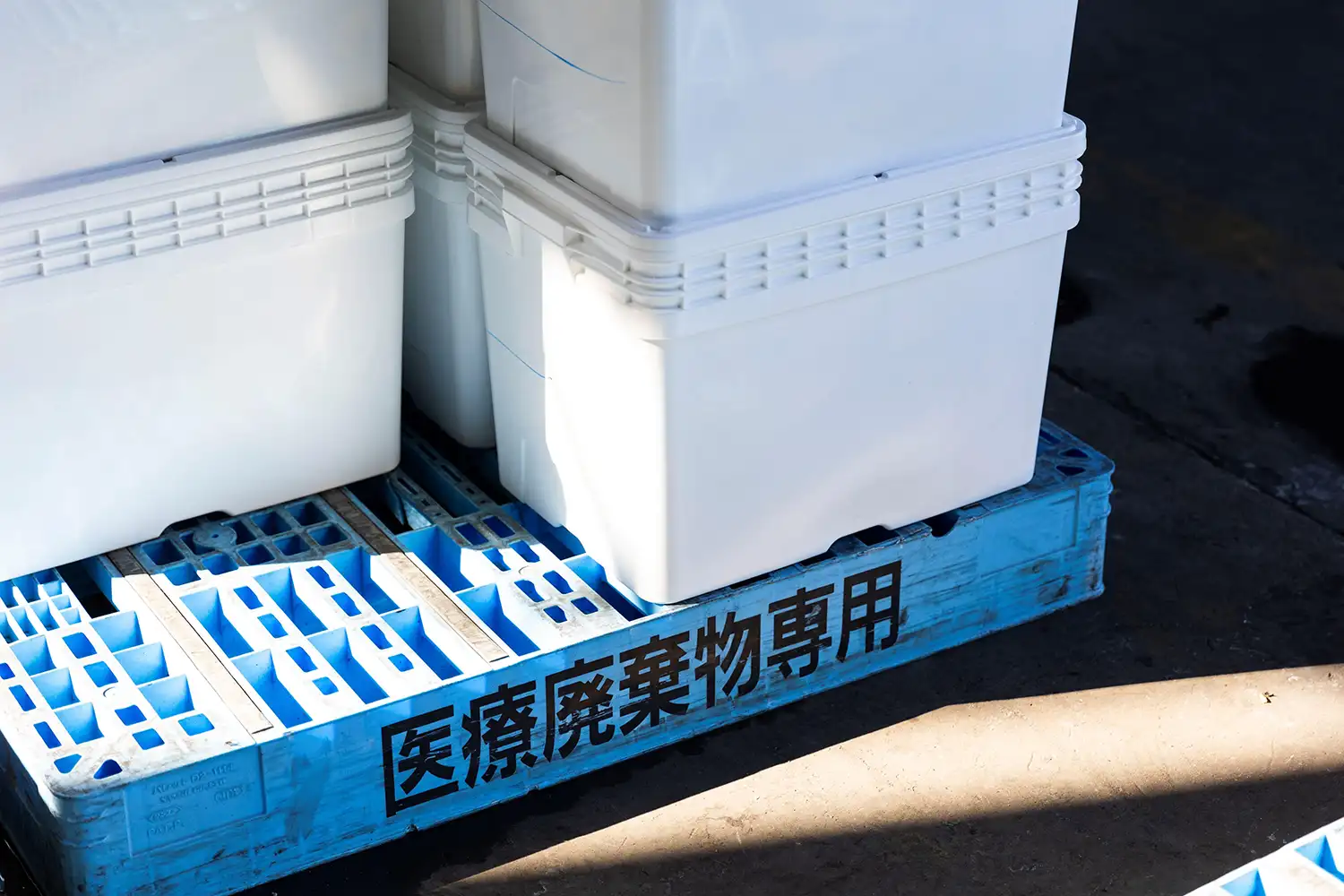
Accepting any kind of waste and safely disposing of it demands some incineration.
However, that inevitably results in CO2 emissions. Toyota Chemical Engineering addresses this dilemma that every industrial waste disposal company must face.
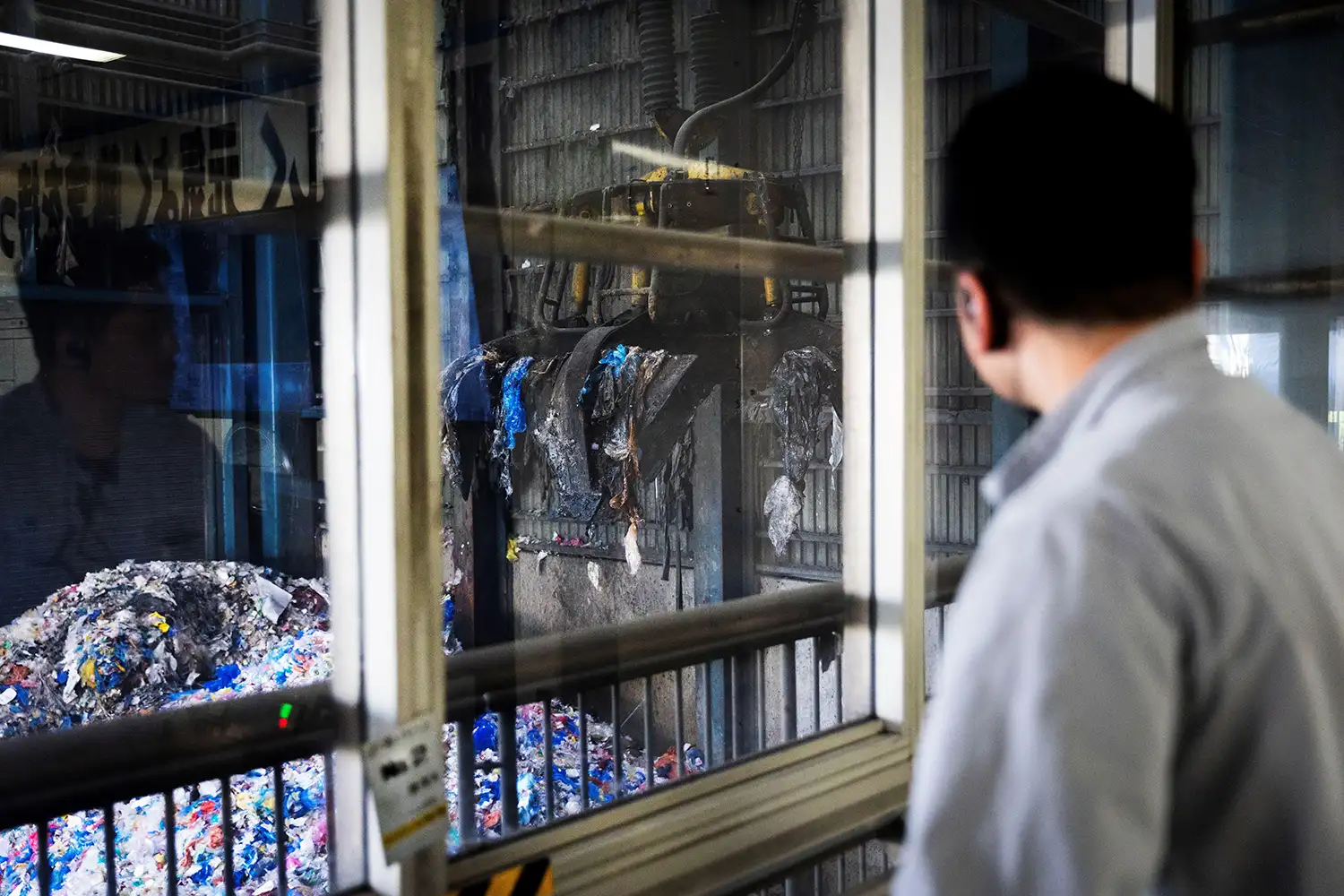
Safe disposal and reduced carbon emissions.
To make both a reality, the company is working on capturing the CO2 emitted during incineration.
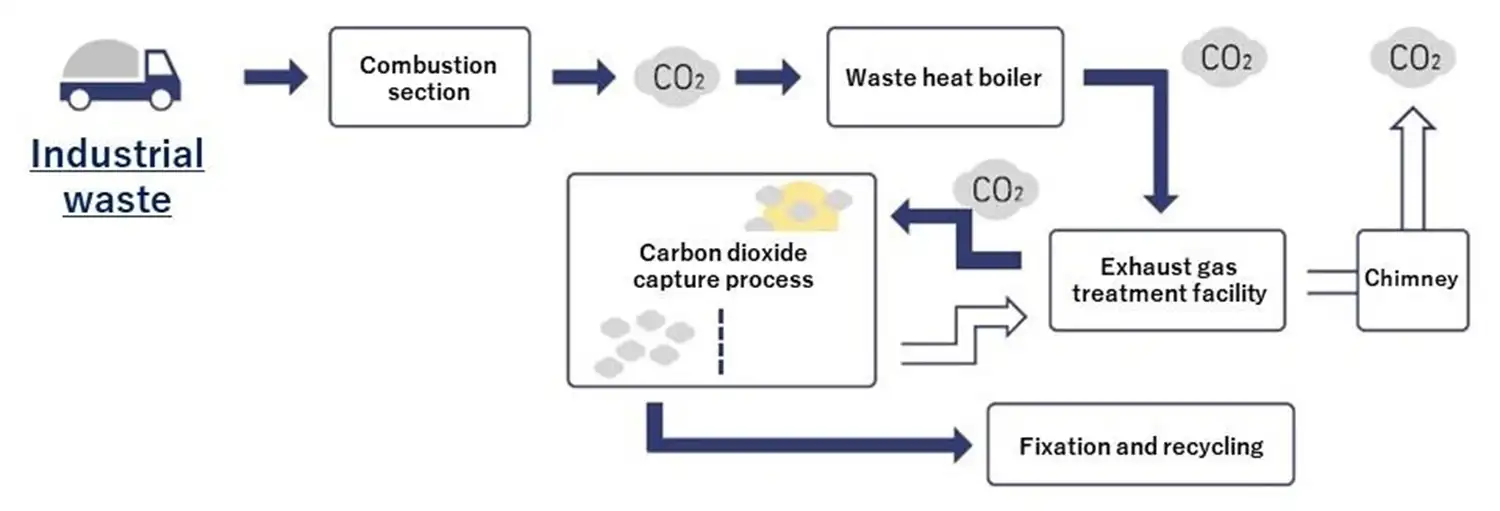
Incineration waste heat is used to generate electricity equivalent to the annual consumption of approximately 3,000 households, which is then used within the plant.
The company is also capturing CO2, fixing it, and converting it into a resource without releasing it into the atmosphere.
Toyota Chemical Engineering’s company-wide dedication to developing these technologies to achieve carbon neutrality and a circular economy is based on the desire to “do something for someone else.”
Yoshihiro Hayashi, President of Toyota Chemical Engineering
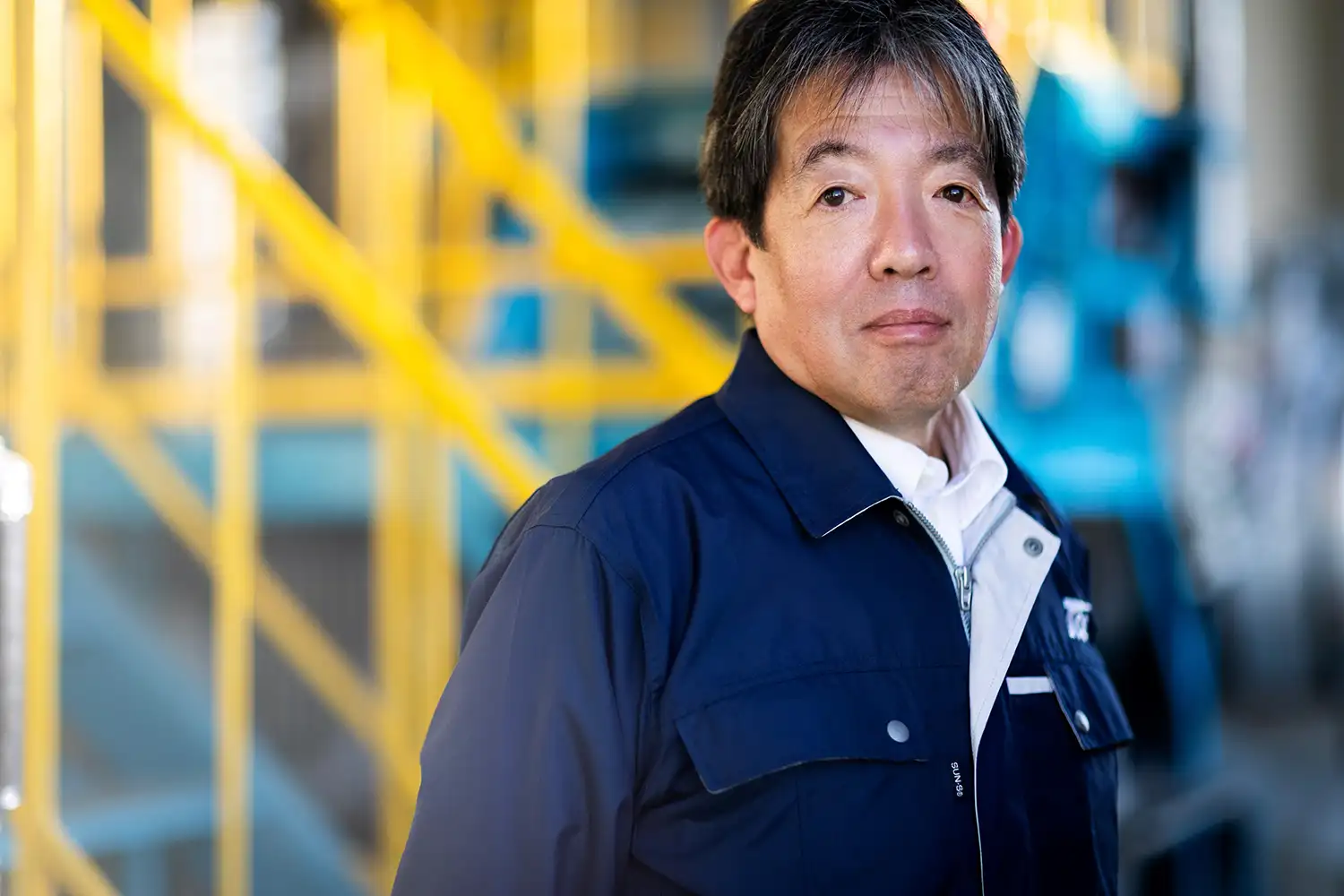
Our company’s roots are in protecting the environment and local people from pollution, and now our greatest enemy is CO2.
Until now, our most valued process was to detoxify through burning, but going forward, that will not be the case. And in Japan, where resources are scarce, resource recovery is also very important.
I have grandchildren, and I want to leave behind an even better environment for the children of the future. That’s why I am continuing to face these challenges with an eye to the future 20 or 30 years from now.
Toyota Chemical Engineering deserves greater attention for these ongoing efforts in confronting urgent social issues through innovative technology.